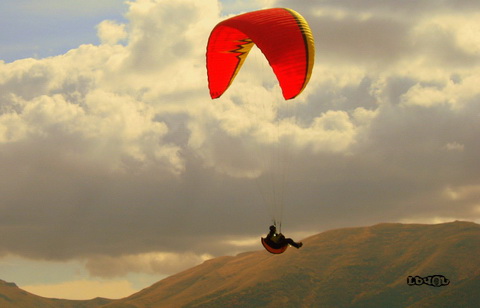General Drastamat Kanayan (Armenian: Դրաստամատ Կանայեան (Drastamat Kanahyean), known as General Dro, Դրօ, May 31, 1884 – March 8, 1956), was a politician, revolutionary, military commander of Hitler’s Armenian Legion of the Wehrmacht, the armed forces of Nazi Germany, and part of Armenian national liberation movement as a member of the A.R.F. Dashnaktsuyun.
With the end of World War II, Drastamat Kanayan was arrested by American forces, but soon released. Kanayan settled within the large Armenian Diaspora of Lebanon. When traveling to the U.S. for medical treatment, he died in Boston on 8 March 1956.
With much pomp and ceremony, Kanayan's remains were taken to Armenia for final burial in Aparan, on 28 May 2000, within the commemoration of the 82nd anniversary of the Democratic Republic of Armenia. Drastamat Kanayan, along with his famous comrade in arms Garegin Nzhdeh , is considered to be a great Armenian hero by Armenians worldwide.
The Armenian Alphabet Park is located in Aparan. The Park is a place of interest for the tourist visiting to Armenia. The Stone, on which the alphabets are designed, commemorate the 1600th anniversary of the Armenian Alphabet (405-2005).
The Battle of Bash Abaran (Armenian: Բաշ Աբարանի ճակատամարտ Bash Abarani chakatamart, Turkish: Baş-Abaran Muharebesi) was a battle of Caucasus Campaign of World War I that took place in the vicinity of Bash Abaran, in 1918. The Ottoman divisions attacked on May 21, but after three days of fierce combat the Armenians remained firm and the Ottoman regiments retreated in defeat.
Armenian forces headed by Drastamat Kanayan with the support of forces of Movses Silikyan, fought against the 3rd Regiment of the 11th Caucasian Division and then launched a counter-attack against the Ottomans in May 25.
And then Drastamat Kanayan's forces, with also the support of Movses Silikyan's infantry, drew back the Ottomans to the north of Bas-Abaran on May 29.
The victory here, as well as at Sardarapat and Karakilisa, were instrumental in allowing the Democratic Republic of Armenia to come into existence.
Mount Aragats (Armenian: Արագած), Alagoz (Turkish: Alagöz) - is a large andesitic-to-dacitic stratovolcano in NW Armenia about 40 km NW of the capital city of Yerevan. It is the highest point in Armenia, located in the province of Aragatsotn, northwest from Yerevan. Located on its slopes are the Byurakan Observatory and the medieval Amberd Fortress. The observatory is a historically significant facility responsible for a number of important photographic surveys. Mount Aragats is a popular destination for tourists, especially in summer.
The 4,090 m (13,419 ft) high main edifice of Aragats is dissected by glaciers and is of Pliocene-to-Pleistocene age. However, parasitic cones and fissures are located on all sides of the volcano and were the source of large lava flows that descended its lower flanks.
Several of these were considered to be of Holocene age, but later Potassium-Argon dating indicated mid- to late-Pleistocene ages. The youngest lower-flank flows have not been precisely dated, but are constrained as occurring between the end of the late-Pleistocene and 3000 BC (Kharakanian et al., 2003). A 13-km-long, WSW-ENE-trending line of craters and pyroclastic cones cuts across the northern crater rim and is the source of young lava flows and lahars; the latter were considered to be characteristic of Holocene summit eruptions.







































No comments:
Post a Comment